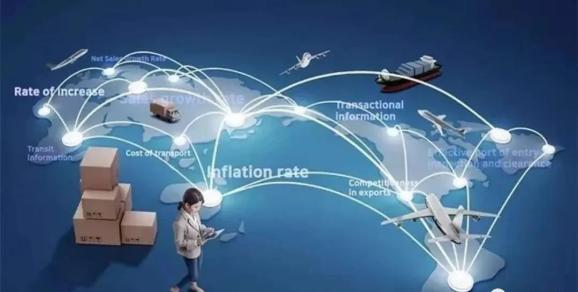Under the epidemic, the global industrial chain and supply chain are undergoing profound changes.
Regionalization and localization become a new trend
During the epidemic, the lesson of the failure of a supply of supporting parts in the upstream and the inability to start the downstream has made many companies realize that "the gold chain is not as good as the industrial chain."
Zhang Yansheng, chief researcher of the China International Economic Exchange Center, said that under the background of normalization of epidemic prevention and control, the importance of industrial chain and supply chain security has exceeded efficiency and has become the main pursuit of enterprises. Many countries have also requested that production links that have been moved overseas be moved back to their homeland for the sake of maintaining their own economic security. As a result, industrial chains and supply chains have become shorter and more flexible, and the trend of regionalization and localization has become increasingly obvious.
Fu Mengzi, deputy dean of the China Institute of Modern International Relations, also said that in order to prevent the overall industrial chain from shutting down, the phenomenon of shortening the industrial chain as much as possible or making the industrial chain around the country's surrounding areas to be located nearby is bound to appear. As a result, regional cooperation will receive more attention, and major congresses will increase their investment in regional policies, and regional cooperation will show a momentum of deepening development.
Recently, economies in Asia, especially in East Asia, have been seeking to strengthen mutual economic and trade cooperation. The parties to the Regional Comprehensive Economic Partnership (RCEP) have repeatedly reiterated that they must make every effort to sign the RCEP agreement within this year.
"The big one is king" in the consumer market?
Wu Yabin, director of the China Investment and Technology Promotion Office of the United Nations Industrial Development Organization, believes that traditional trade methods, the formation of global online retail markets, and traditional marketing channels are changing. In the future, global products will reach consumers directly through digital marketing platforms and online merchants. Production and manufacturing are gradually moving closer to the place of consumption, especially in a consumer market of the size and potential of China that will attract more investors.
Wei Jianguo, vice chairman of the China International Economic Exchange Center, also said in an interview with a reporter from China News Agency that as the world’s largest consumer market, China will become more attractive to global investors.
According to official data, when the global cross-border investment is generally sluggish this year, China’s actual use of foreign capital in RMB increased by 18.7% year-on-year in August, a record growth rate for the year. At present, China's absorption of foreign capital has resumed growth, with a year-on-year growth rate of 2.6% from January to August.
However, it was also reminded that the production link is getting closer to the consumer market, which means that the industrial chain serving the Chinese and Asian markets is expected to accelerate to agglomerate in China, but the industrial chain serving the US market is likely to return to the Americas, which has long been dependent on It will be a big challenge for East Asian companies with US and European orders.
eastward shift of production factors
In Wei Jianguo's view, after the epidemic, global high-end manufacturing, modern service industries, technology and innovation, as well as capital and talents will move eastward, which will bring opportunities to developing countries such as China.
Wei Jigang, Director of the Research Office of the Industrial Economic Research Department of the Development Research Center of the State Council of the People’s Republic of China, said that in the long run, China’s status in the global manufacturing industry will increase, and the status of emerging economies such as Vietnam and India will also increase. A new pattern of strong coexistence, multi-regional development, and multiple co-governance.
Many foreign companies have recently strengthened their cooperation with Chinese companies in digital transformation. In early September, Siemens and Guangdong Huaxing Glass Co., Ltd. reached an agreement to digitally transform the company's 15 factories. This is Siemens' world's first digital lighthouse factory project in the daily container glass industry. Amazon Cloud Services recently announced that it has reached cooperation with Shenzhou Digital and others to help traditional enterprises move to the "cloud".
Analysts believe that with the restructuring of the global industrial chain, the competition between countries in the future will be the competition between industrial chains and industrial chains, industrial clusters and industrial clusters. In the future, China's industrial clusters should seize the trend of eastward shift of factors and further transform and upgrade. (Finish)












